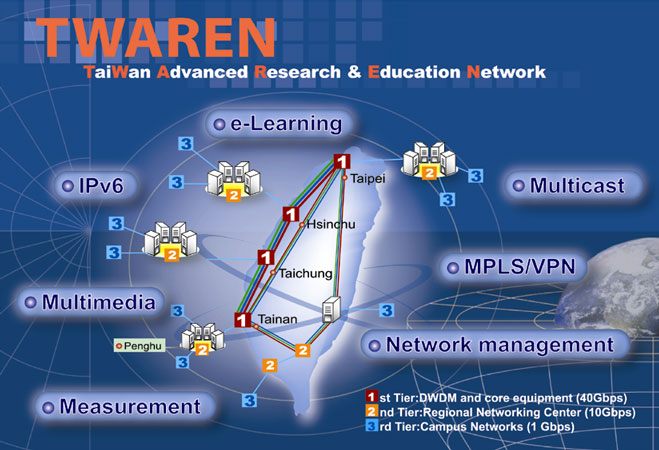Cyberinfrastructure is now essential for advancing scientific discovery and the state-of-the-art in engineering. It doesn’t matter whether it’s the inner workings of the universe or the inner workings of the economy, the design of a new chemical process or the design of a new material, new insights into how cells function or the delivery of personalized medicine, the spawning of a tornado or planning urban development. The basic fact remains the same—cyberinfrastructure is now a driver of science and engineering. Without it, science and engineering will not reach their full potential.
But, science and engineering is a global activity. There is not an American chemistry and a French chemistry, nor is there a Japanese electrical engineering and a Brazilian electrical engineering. Scientists and engineers around the globe are focused on unraveling the secrets of nature and applying this hard gained knowledge to the betterment of humanity. Cyberinfrastructure must support this global activity. In fact, it is our belief that cyberinfrastructure, properly designed and constructed, will advance science and engineering as a global activity by facilitating access to resources and expertise wherever they are located.
There are three intertwined strands of a global infrastructure:
Cyberenvironments: to provide researchers with the ability to access, integrate, automate, and manage complex, collaborative projects across disciplinary as well as geographical boundaries.
Cyber-resources: to ensure that the most demanding scientific and engineering problems can be solved and that the solutions are obtained in a timely manner.
Cybereducation: to ensure that the benefits of the national cyberinfrastructure are made available to educators and students throughout the country and the world.
NSF’s latest version of "Cyberinfrastructure Vision for 21st Century Discovery" was released on January 20, 2006. One of the guiding principles in this vision is "national and international partnerships, public and private, that integrate CI users and providers and benefit NSF’s research and education communities are … essential for enabling next-generation science and engineering."1
During his keynote address2 at NCSA’s 20th Anniversary Celebration in January 2006 entitled, "Un-common sense: A recipe for a cyber planet," Dr. Arden Bement, Director of the National Science Foundation, remarked that "cyberinfrastructure will take research and education to a new plane of discovery. It is critical for advancing knowledge in the face of a dynamic and changing global technological environment." In discussing issues related to global competition and sustaining the long history of technological leadership that the US has enjoyed, Dr. Bement provided some uncommon-sense advice: "We should pursue more global involvement, not less. The rapid spread of computers and information tools compels us to join hands across borders and disciplines if we want to stay in the race."
For this issue of CTWatch Quarterly, we invited articles from several key influential trend-setters across the globe and asked them to provide their vision for cyberinfrastructure in their respective environs and for extending them in an international context. (The November 2005 issue of CTWatch Quarterly3 focused on cyberinfrastructure in Europe.)








